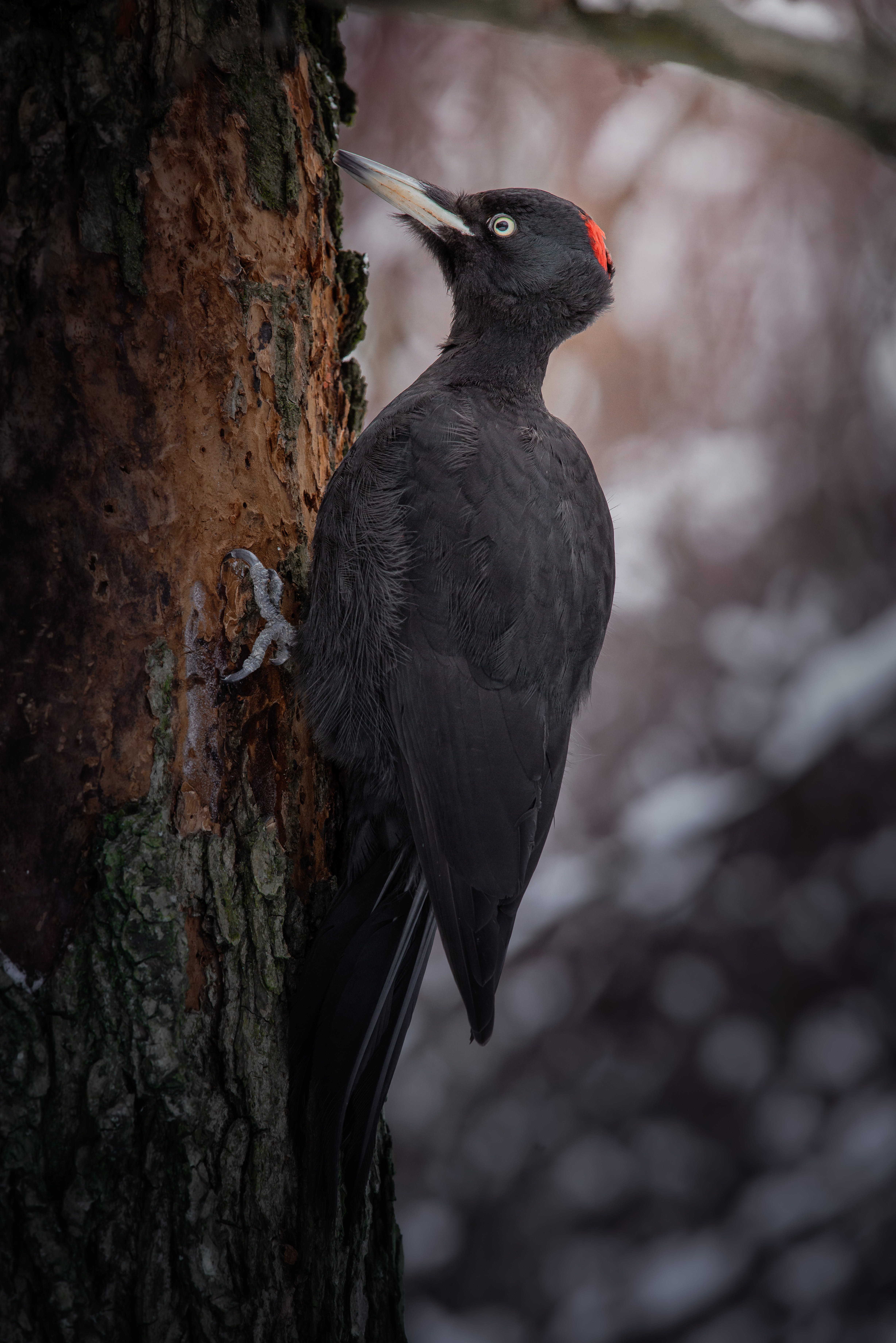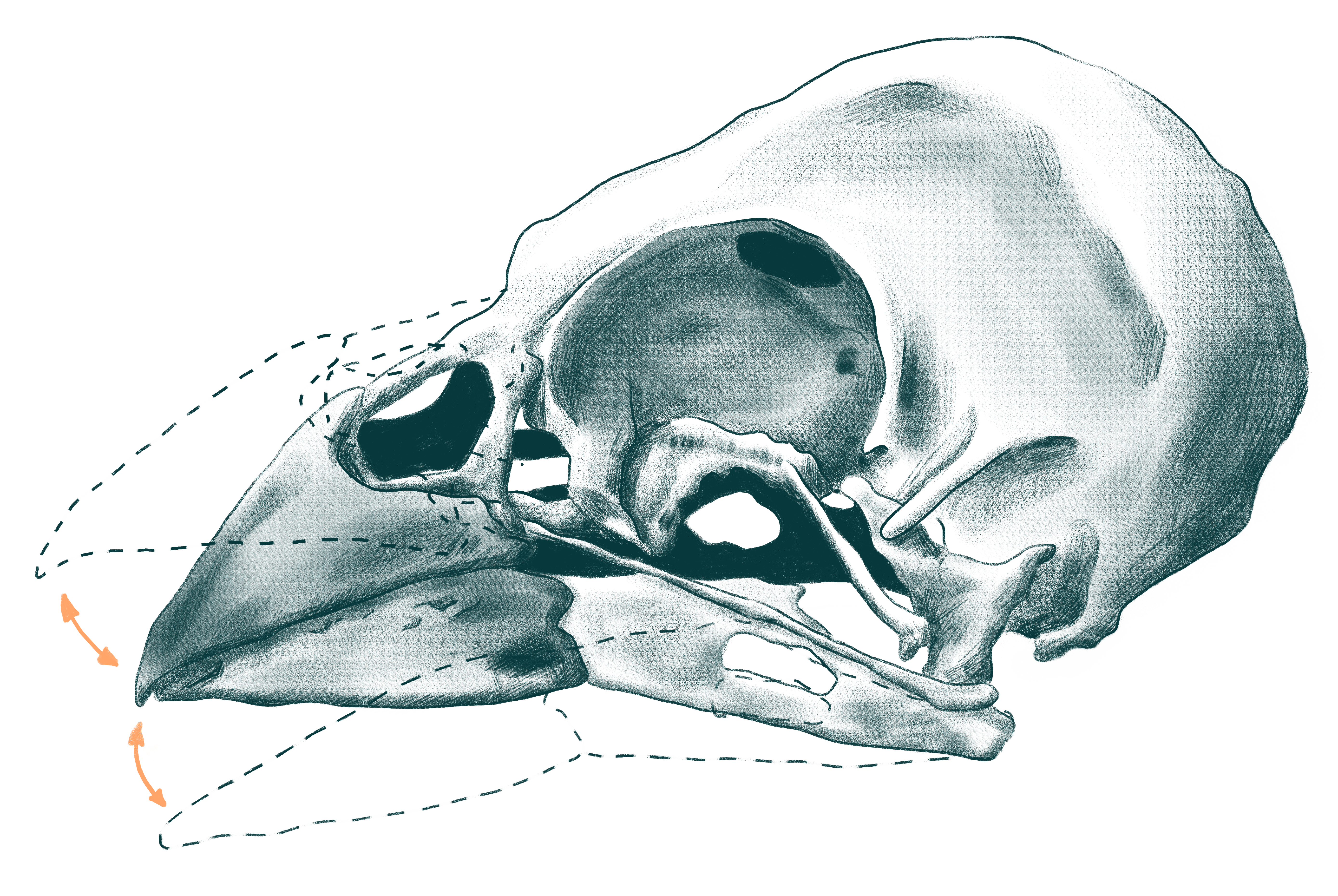Why woodpeckers don't get stuck in trees.
By Maja Mielke

Black woodpecker. Image by Daniil Komov from Pexels.
I should start with a confession: In contrast to what the title implies, woodpeckers do get stuck in trees. Many times a day! However, researchers have found out that they free themselves within a blink of an eye. This is possible thanks to some remarkable features of the avian skull.
During the hundreds of pecks a woodpecker does every day, the bird does get stuck from time to time. Shortly after the impact, the wood of the tree can render the beak immobile. But why don’t we see woodpeckers hanging with their beaks on tree trunks, struggling to free themselves? Researchers from the University of Antwerp and the National Centre for Scientific Research in Paris have found out that they can free their beak within 0.05 seconds using complex movements within the skull.
Wait. Movements within the skull?
The skull of a bird is not a solid body. It is highly kinetic, also in woodpeckers, although they are specialized in highly effective pecking and literally use their beak as a hammer. ‘Kinetic’ in this case means that the different bones of the skull are not fused, but can move relative to each other. Two of these bones are the upper and lower jaws, which can both move relative to the skull and slide along each other. It turned out that woodpeckers make use of exactly these movements to free their beak when it gets stuck.

Fig. 1: The kinetic skull of birds (shown here: a canary skull) allows for movement of both upper and lower beak relative to the rest of the skull. Image credit: Maja Mielke (reference photo from https://skullsite.com)
The researchers recorded high-speed videos of pecking black woodpeckers (Dryocopus martius) in Zoos in Austria and Switzerland. In 103 out of the 284 analyzed pecks, the birds got stuck with their beaks, not being able to retrieve their beak directly after the impact. A thorough analysis of the high-speed videos showed how the birds managed to free themselves. And this is how it works:
The freeing works in two movements (visualized in Fig. 2). In the first phase, the woodpecker lifts its forehead up. Because both upper and lower beak tips are stuck in the tree, and because of the kinetic skull, this causes the beak to open at the base. At the same time, the upper beak slides backward a bit, freeing the tip of the upper beak. In the second phase, the whole beak is rotated downwards (the head is lifted), which causes the retraction of the lower beak tip. Et viola! The beak is free!

Fig. 2: Image modified from Van Wassenbergh et al. (2022)
Want so see the woodpeckers in action? Have a look here!
This whole freeing mechanism, as complex as it might seem, occurs within a blink of an eye. Within 0.05 seconds, the beak is free. Impossible to recognize with the bare eye that it was stuck in the first place. A woodpecker could perform 3 pecking-and freeing cycles within a second!
As you can see, a kinetic skull is an important feature for pecking birds. The movements within the skull and between upper and lower beak are essential to avoid the beak getting stuck in the tree. This saves the bird a lot of energy, because freeing of the beak via straight retraction of the head would consume much more energy.
Non-pecking birds have a kinetic skull as well. The ability to move the upper beak relative to the braincase (called ‘cranial kinesis’) is common among birds. But its functional advantage is still not fully understood. This study, published in the Journal of Experimental Biology, reveals a previously unknown, but essential function of cranial kinesis in pecking birds.
Thanks for reading! If you have any questions or comments or just want so say hi, I will be happy to hear from you. Feel free to email me!